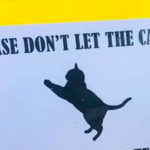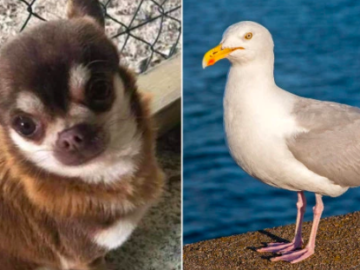This past June has been the hottest one on record for the world, yet in a few months we’ll be plunged back into the winter months, wishing that summertime would hurry up again.
And humans aren’t the only ones who feel the effects of the chilly outdoors. There’s plenty of little animals that live outdoors and need to contend with the harsh realities of the weather. However, for farm animals, there might be a solution thanks to crafty and clever farmers who’ve taken up knitting.
Farmers have come up with very cute ear muffs for their calves to help protect them against the harsh winter weather in the months to come.

While we’re in the middle of a heat wave, the reason the topic has come to our attention, is because Twitter user @ThisFarmingMan_ shared a very adorable photo of a young calf wearing knitted earmuffs in a baby pink color. The picture has since gained an impressive 171,000 likes.
He tweeted, “So it turns out ear muffs for calves to stop them getting frostbite are a real thing…”
So it turns out ear muffs for calves to stop them getting frostbite are a real thing… pic.twitter.com/KiiAbTaRYV
— Cans Moleman (@ThisFarmingMan_) June 25, 2019
While it’s obviously super cute, protecting young calves from the cold is actually very important, as it easily lead to frostbite, hypothermia and in extreme cases, even death.
Dr. W. Dee Whittier wrote in a paper entitled Calves and the Cold, explaining, “The extremities are most at risk. Frozen ears and tails result in changes of cattle appearance but do not affect cattle performance significantly. Sadly, if a calf’s feet freeze, it must be put to sleep or it will die.”
Here’s the ever famous calf Star, rocking her moo muffs pic.twitter.com/POBNEL02Tb
— Work for Days Farm (@WFDF2016) January 18, 2018
He continued with, “Newborn calves are most at risk because they are wet and because they have a large surface area in relation to their total body mass. Calves are not fully capable of maintaining temperature the first several hours of life. Newborn calves have a circulatory system that is less able to respond to cold changes as compared to more mature animals. Weather conditions have a huge bearing on how big of a risk there is of frostbite, with wind being the biggest attribute.”
Dr. Whittier has also said, “The effect of wind is often referred to as wind chill and tells how living things ‘feel the temperature.’ Wind chill is often many degrees colder than the actual temperature. Humidity has a large effect on cold as well since humid air can take more warmth away from animals.”
Posted by Triple P Farm on Sunday, February 4, 2018
While it’s hot now, it’ll get cold soon, meaning that we can probably expect more cute pictures of calves in ear muffs – not that we’re complaining.






